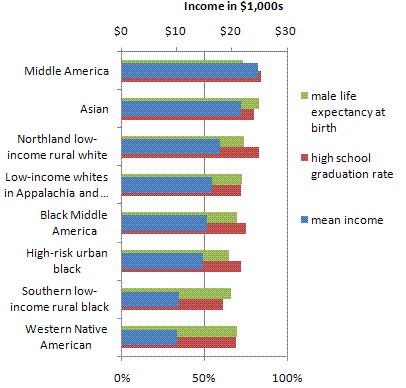In Coming of Age as a Poet (Harvard, 2003), Helen Vendler interprets the earliest mature verse of four major poets: Milton, Keats, Eliot, and Plath. She argues that great poets reach maturity when they develop consistent diction and formal styles; favored physical and historical milieux; major symbolic referents; characters or types of characters whom they include in their verse; and some sort of (at least implicit) cosmology. They often retain these combinations to the ends of their careers.
Robert Lowell provides an example (mine, not Vendler’s). From the 1940s until his death, his characteristic milieu is New England–specifically the coastal region from Boston to Nantucket–over the centuries from the Puritan settlement to the present. His diction mimics the diverse voices of that region’s history, from Jonathan Edwards to Irish Catholics, but he brings them into harmony through his own regular rhymes and rhythms. His major symbolic references include gardens, graveyards, wars of aggression, the Book of Revelation, and the cruel ocean. He avoids presenting a literal cosmology, but he describes several worldviews in conflict. Sometimes, the physical and human worlds are cursed or damned and we are estranged from an angry, masculine God. Other times, the world is a garden: organic, fecund, and pervasively feminine. (See my reading of The Indian Killer’s Grave for detail.)
A combination of diction, favored characters, milieux, subjects of interest, value-judgments, and a cosmology could be called a “personality.” I don’t mean that it necessarily results from something internal to the author (a self, soul, or nature-plus-nurture). Personality could be a function of the author’s immediate setting. For instance, if Robert Lowell had been forceably moved from Massachusetts to Mumbai, his verse would have changed. Then again, we often choose our settings or choose not to change them.
A personality is not the same thing as a moral character. We say that people are good or virtuous if they do or say the right things. Their diction and favorite characters seem morally irrelevant. For example, regardless of who was a better poet, Lowell was a better man (in his writing) than T.S. Eliot was, because Eliot’s verse propounded anti-Semitism and other forms of prejudice, whereas Lowell’s is full of sympathy and love.
So we might say that moral character is a matter of holding the right general principles and then acting (which includes speaking and writing) consistently with those principles. Lowell’s abstract, general values included pacifism, anti-racism, and some form of Catholic faith. Eliot’s principles included reactionary Anglicanism and anti-Semitism–as well as more defensible views. The ethical question is: Whose abstract principles were right? That matter can be separated from the issue of aesthetic merit.
I resist this way of thinking about virtue because I believe that it’s a prejudice to presume that abstract and general ideas are foundational, and all concrete opinions, interests, and behaviors should follow from them. One kind of mind does treat general principles as primary and puts a heavy emphasis on being able to derive particular judgments from them. Consistency is a central concern (I am tempted to write, a hobgoblin) for this kind of mind. But others do not organize their thoughts that way, and I would defend their refusal to do so. What moral thinking must be is a network of implications that link various principles, judgments, commitments, and interests. There is no reason to assume that the network must look like an organizational flowchart, with every concrete judgment able to report via a chain of command to more general principles. The hierarchy can be flatter.
To return to Lowell, one way of interpreting his personality would be to try to force it into a structure that flows from the most abstract to the most concrete. Perhaps he believed that there is an omnipotent and good deity who founded the Catholic church when He gave the keys of heaven to Peter. Peter’s successors have rightly propounded doctrines of grace and nature that are anathema to Puritans. Puritans massacred medieval Catholics and Native Americans who loved nature and peace. Therefore, Lowell despises Puritans and admires both medieval Catholics and Wampanoags. In his diction, he mocks Puritans and waxes mournful over their victims. His poetic style follows, via a long chain of entailments, from his metaphysics.
But I think not. It is not even clear to me that Lowell, despite his conversion to Catholicism, even believed in a literal deity. (Letter to Elizabeth Hardwick, April 7, 1959: “I feel very Montaigne-like about faith now. It’s true as a possible vision such as War and Peace or Saint Antony–no more though.”) The point is, literal monotheism did not have to be the basis or ground of all his other opinions, such as his love for and interest in Saint Bernard or his deep ambivalence toward Jonathan Edwards. Those opinions could come first and could reasonably persuade him to join the Catholic Church. By mimicking the diction of specific Puritans in poems like “Mr Edwards and the Spider,” Lowell could form and refine opinions of Puritanism that would then imply attitudes toward other issues, from industrial development to monasticism.
Poets are evidently unusual people, more self-conscious and aesthetically-oriented than most of their peers, and more concerned with language and concrete details than some of us are. As a “sample” of human beings, poets would be biased.
But they are a useful sample because they leave evidence of their mental wrestling. Poetry is a relatively free medium; the author is not constrained by historical records, empirical data, or legal frameworks. Poets say what they want to say (although it need not be what they sincerely believe), and they say it with precision.
I think the testimony of poets at least suffices to show that some admirable people begin with concrete admirations and aversions, forms of speech, milieux and referents, and rely much less on abstract generalizations to reach their moral conclusions. Their personalities and their moral characters are one.

